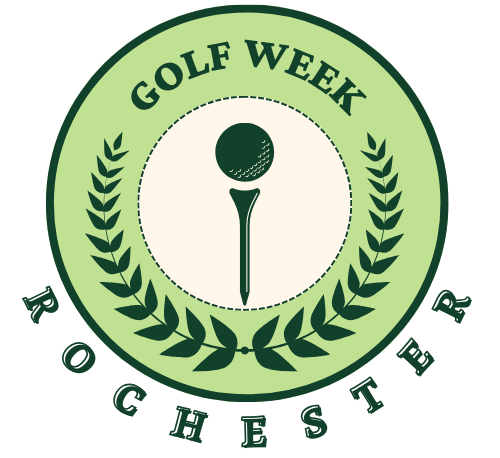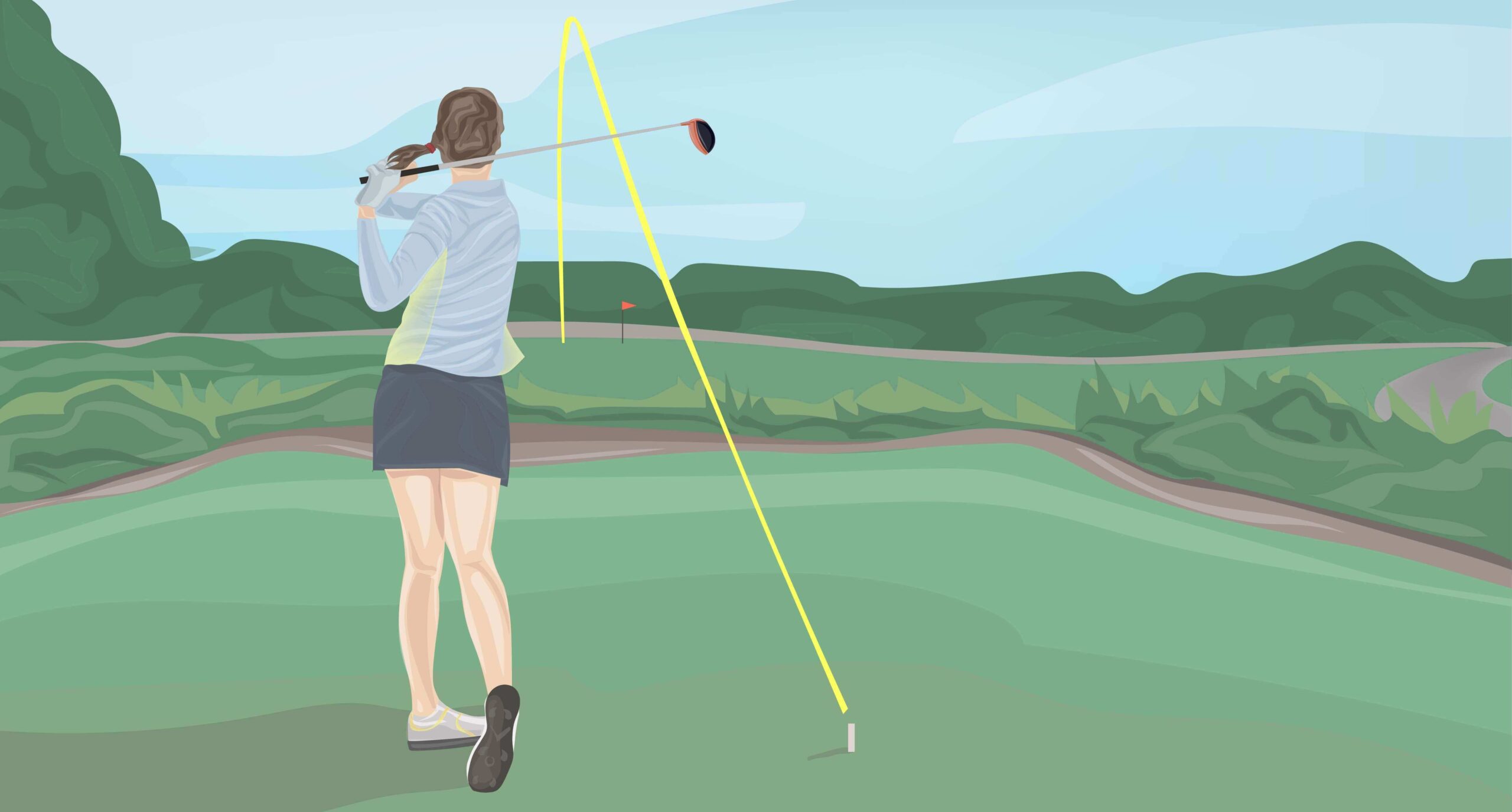When your golf ball consistently pulls to the left, it can be incredibly frustrating, but it’s a problem that can be fixed. To bring your shots back in line, it’s crucial to address a few specific areas in your swing and setup.
This guide will walk you through six quick fixes that will help you stop pulling your shots and get you back on track to hitting straight and accurate balls.
These Are The Best Solutions
- Check and correct your alignment
- Adjust your grip to a more neutral position
- Move the ball slightly back in your stance
- Focus on an inside-to-outside swing path
- Control your wrist action for a natural release
- Ensure proper lower body rotation
1. Check and Correct Your Alignment
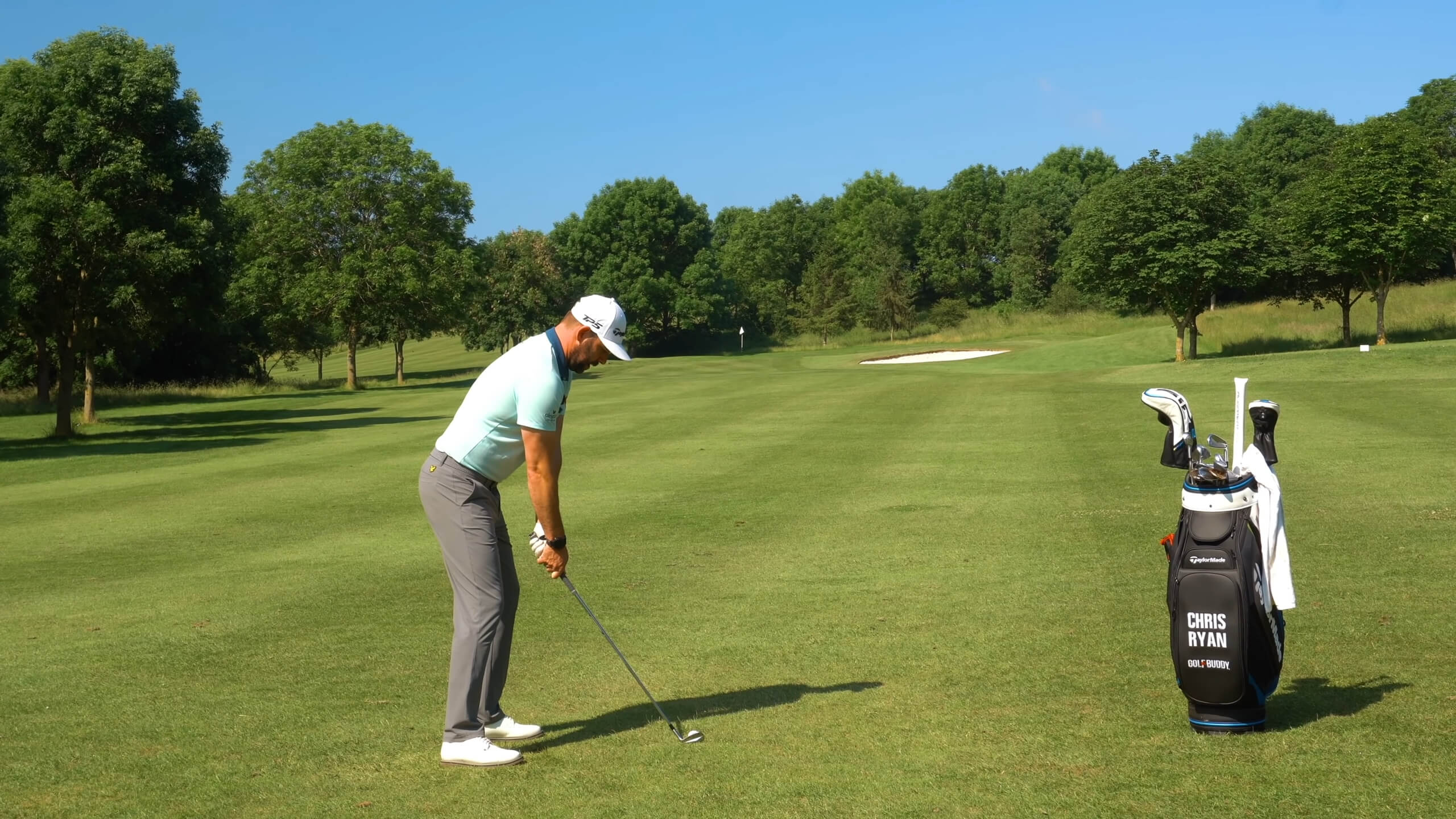
Alignment is a critical factor in preventing pulled shots.
Here’s how to ensure you’re lined up properly:
- Feet Position: Your feet should be parallel to the target line. Imagine a straight line running from your toes to the target.
- Hips and Shoulders Alignment: Make sure your hips and shoulders are also parallel to the target line. Misalignment here can easily cause the ball to pull left.
- Use Visual Aids: Place alignment rods or clubs on the ground to visually confirm your stance. One rod should point at the target, while the other is parallel to your feet. This setup ensures that your body is square to the target.
- Check Your Divots: After hitting a shot, look at the direction of your divot. If it’s pointing left of the target, you’re likely misaligned. Adjust accordingly to correct this.
Proper alignment ensures that your shots are aimed correctly from the start, reducing the likelihood of pulling the ball to the left. Incorporate these steps into your pre-shot routine to improve consistency and accuracy on the course.
2. Adjust Your Grip to a More Neutral Position
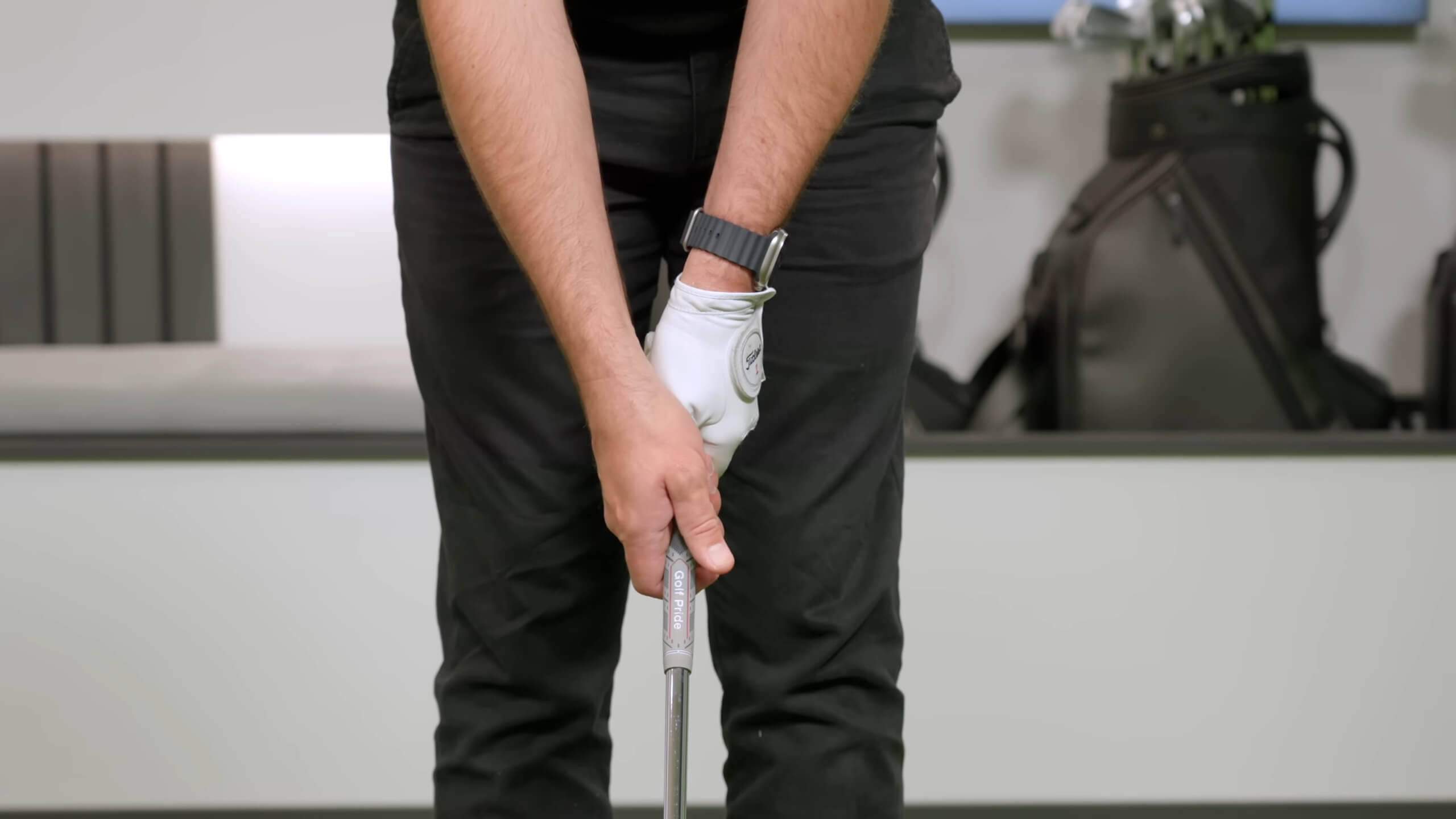
Your grip directly influences the clubface at impact, which is crucial in avoiding pulled shots.
Here’s how to adjust your grip for better results:
- Evaluate Your Current Grip: If you notice that the ball consistently pulls left, your grip might be too strong. A strong grip tends to close the clubface, causing the ball to veer left.
- Neutral Grip Position: To achieve a neutral grip, check the “V” shape formed by your thumb and index finger. These V’s should point towards your right shoulder (for right-handed golfers). This positioning helps keep the clubface square at impact.
- Hand Placement: Ensure that both hands are working together on the club. The lead hand (left for right-handers) should be placed so that you can see two to three knuckles, and the trail hand should fit snugly below it, with the palms facing each other.
- Grip Pressure: Maintain a light yet firm grip on the club. Holding the club too tightly can limit wrist movement, which may cause the clubface to close too soon. A lighter grip allows for a smoother release through impact.
By refining your grip, you can maintain a square clubface at impact, greatly reducing the chances of pulling the ball left. Regularly check and adjust your grip during practice to ensure consistency on the course.
3. Move the Ball Slightly Back in Your Stance
The position of the ball in your stance is crucial to controlling the clubface at impact.
Here’s how to adjust it for better accuracy:
- Identify the Current Ball Position: If the ball is positioned too far forward in your stance, it often leads to a closed clubface at impact, resulting in a pull to the left.
- Adjust the Ball Placement: For most clubs, the ball should be positioned slightly forward of center, particularly for mid-irons. Move it back a bit to ensure that the clubface has enough time to square up before impact.
- Customize for Each Club: The correct ball position varies depending on the club. For drivers, the ball should be near the left heel, while for shorter irons and wedges, it should be closer to the middle of your stance.
- Test and Observe: On the practice range, try moving the ball back slightly and observe the changes in your ball flight. A minor adjustment can lead to a significant improvement in your shot accuracy.
Proper ball positioning allows for better control of the clubface, helping to prevent the ball from pulling left. Regularly monitor and adjust the ball position for each club to maintain consistent shot-making.
4. Focus on an Inside-to-Outside Swing Path
Your swing path plays a significant role in determining the direction of your golf shots.
Here’s how to ensure your swing path helps you avoid pulling the ball to the left:
- Focus on Your Current Swing Path: A common cause of pulled shots is an outside-to-inside swing path, where the club approaches the ball from outside the target line. This path usually results in a closed clubface at impact, pulling the ball left.
- Practice the Inside-to-Outside Path: Focus on bringing the club back on an inside path during your backswing. On the downswing, aim to keep the club on an inside-to-outside path. This movement promotes a square or slightly open clubface at impact, reducing the likelihood of pulling the shot.
- Use Drills to Reinforce the Path: Drills like the “two-ball drill” can be effective. Place a second ball a few inches outside and slightly behind your target ball. Your goal is to avoid hitting the second ball while making your swing, encouraging an inside path.
- Visualize the Path: During practice, visualize the clubhead traveling from inside the target line to outside as it moves through impact. This mental image can help reinforce the correct swing path.
An inside-to-outside swing path is essential for preventing pulls and achieving straighter shots. Incorporating these adjustments into your practice routine can help you build muscle memory for a more consistent swing.
5. Control Your Wrist Action for a Natural Release
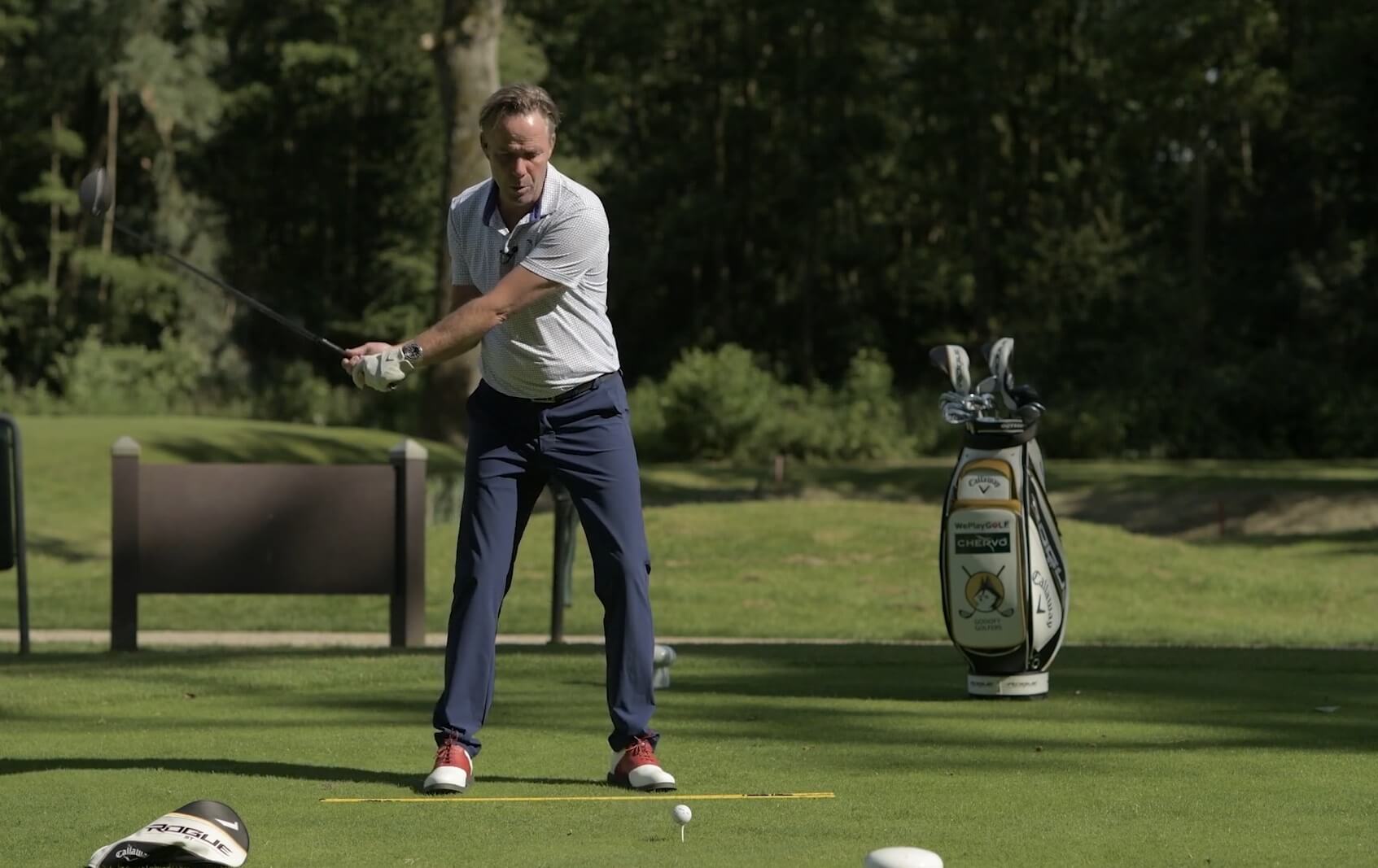
Proper wrist action is key to preventing pulled shots, as it directly affects the clubface at impact.
Here’s how to ensure your wrists are working correctly during your swing:
- Avoid Early Wrist Release: Prematurely uncocking your wrists during the downswing can cause the clubface to close too early, leading to a pull. Focus on keeping your wrists cocked until just before impact.
- Promote a Natural Release: The release of your wrists should happen naturally as a result of your body’s rotation through the swing. Let your body lead the motion, allowing the wrists to uncock naturally as you approach the ball.
- Use Wrist Angle Drills: Drills that focus on maintaining the correct wrist angles throughout the swing can be very helpful. For example, using a wrist sensor or practicing with alignment rods can give you feedback on your wrist position during the swing.
- Monitor Grip Pressure: Holding the club too tightly can restrict wrist movement, leading to an early release. Maintain a light grip to allow your wrists to move freely and release at the correct point in the swing.
By focusing on natural wrist action and avoiding early release, you can help ensure that the clubface remains square at impact, reducing the chances of pulling your shots to the left. Regular practice and monitoring of your wrist angles will help reinforce this crucial aspect of your swing.
6. Ensure Proper Lower Body Rotation
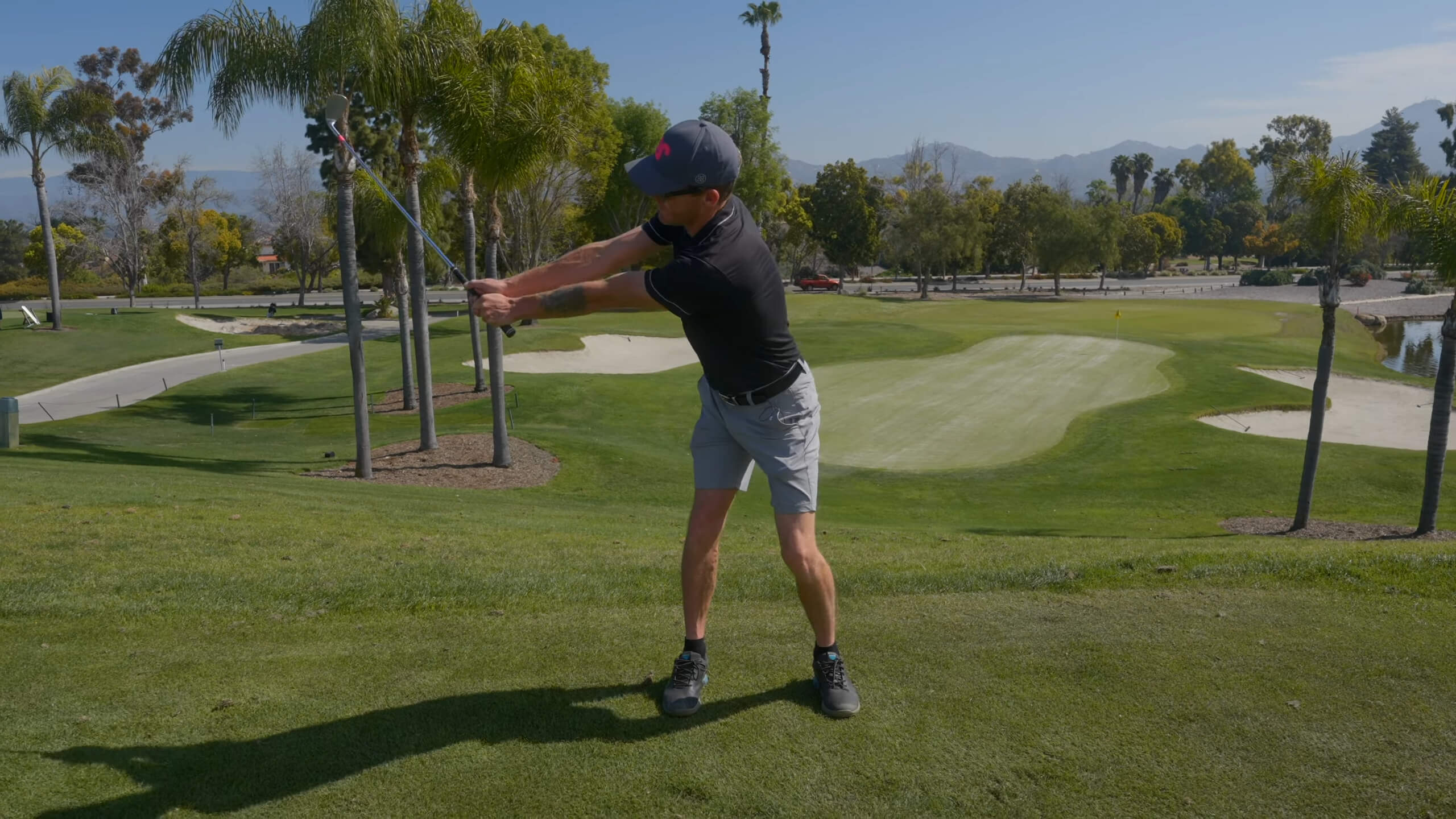
Proper lower body rotation is essential for maintaining a consistent swing path and preventing pulled shots.
Here’s how to optimize your lower body movement:
- Initiate the Downswing with Your Hips: The downswing should start with your hips rotating towards the target, not your arms or shoulders. This sequence helps maintain an inside-to-outside swing path and prevents the clubface from closing too early.
- Shift Your Weight Correctly: During the backswing, shift your weight onto your back foot. As you begin the downswing, transfer your weight smoothly onto your front foot, allowing your lower body to lead the swing. This weight transfer promotes a powerful and controlled release through impact.
- Practice Lower Body Drills: Engage in drills that focus on lower body movement, such as the “hip rotation drill.” This drill involves rotating your hips towards the target without using your upper body, helping to develop the correct sequencing in your swing.
- Avoid Excessive Lateral Movement: Keep your lower body rotation controlled and avoid swaying side-to-side. Excessive lateral movement can throw off your balance and lead to inconsistent contact, resulting in pulled shots.
By focusing on proper lower body rotation, you can maintain a consistent and powerful swing path, reducing the chances of pulling the golf ball left. Practicing these adjustments regularly will help you achieve more accurate and consistent shots.
FAQs
How can I stop pulling the ball with my driver?
To stop pulling the ball with your driver, focus on your setup and swing path. Make sure you’re not standing too close to the ball and that your swing path is coming from the inside. Additionally, check your grip to ensure it’s not too strong, as this can cause the clubface to close at impact.
Why am I pulling short iron shots to the left?
Pulling short iron shots to the left can often be caused by overactive hands or wrists during the swing. Ensure that you’re not flipping your wrists at impact and that your hands stay ahead of the clubface. Also, check your ball position to ensure it’s not too far forward in your stance.
Does tee height affect pulled golf shots?
Yes, tee height can affect pulled shots. If the ball is teed too high, it can lead to an upward strike that pulls the ball left. Make sure the ball is teed at a height where the clubface can strike it squarely, typically with half the ball above the top edge of the clubface for drivers.
What drills can help fix my pull in golf?
Several drills can help fix a pull, such as the “alignment stick drill,” which helps ensure proper alignment, and the “two-ball drill,” which promotes an inside-to-outside swing path. Practicing these drills regularly can help eliminate pulling shots.
Can my stance width cause me to pull the golf ball?
Yes, stance width can influence pulled shots. A stance that is too narrow can cause balance issues and make it difficult to rotate properly, leading to a pull. Conversely, a stance that is too wide can restrict hip rotation, also resulting in pulled shots. Find a stance that allows for stability and proper rotation.
Is my follow-through causing me to pull the ball left?
Your follow-through can contribute to pulling the ball left if you’re not finishing your swing properly. If your follow-through is too abrupt or you’re cutting it off, it can indicate an over-the-top swing path, which pulls the ball left. Focus on a smooth, complete follow-through that aligns with your target line.
Last Words
Pulling the golf ball to the left can be a frustrating issue, but with the right adjustments, it’s something you can easily correct. By focusing on your alignment, grip, ball position, swing path, wrist action, and lower body rotation, you can significantly improve your shot accuracy.
Add these six quick fixes into your practice routine, and you’ll be well on your way to hitting straighter, more consistent shots. Keep practicing these techniques, and soon you’ll see the results on the course.
